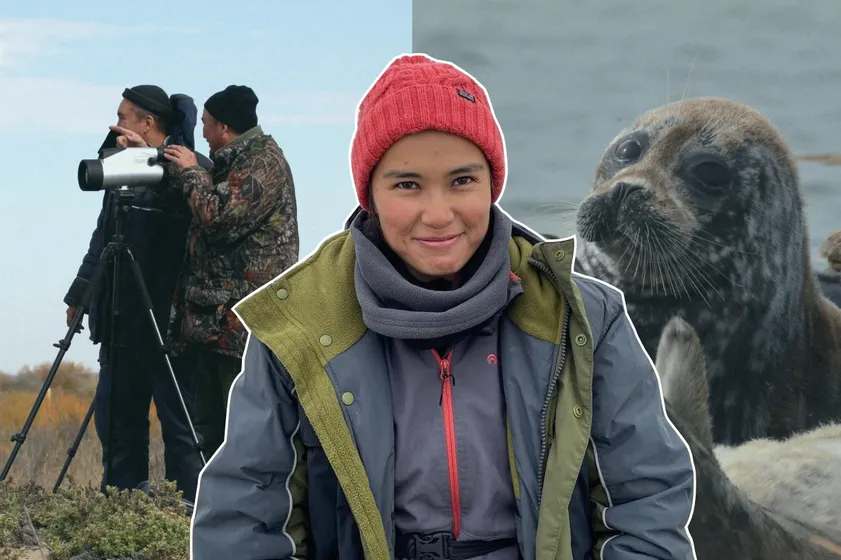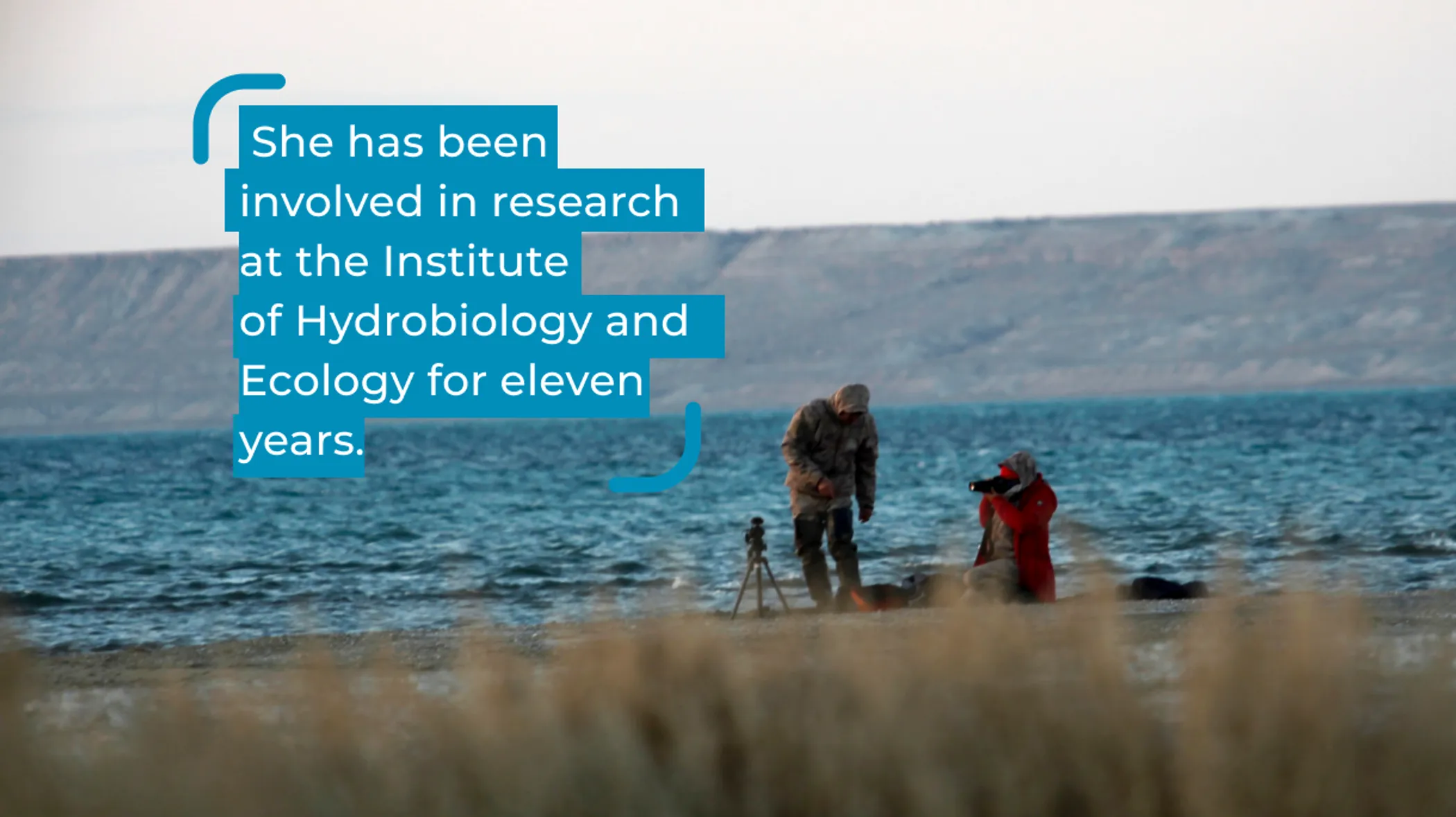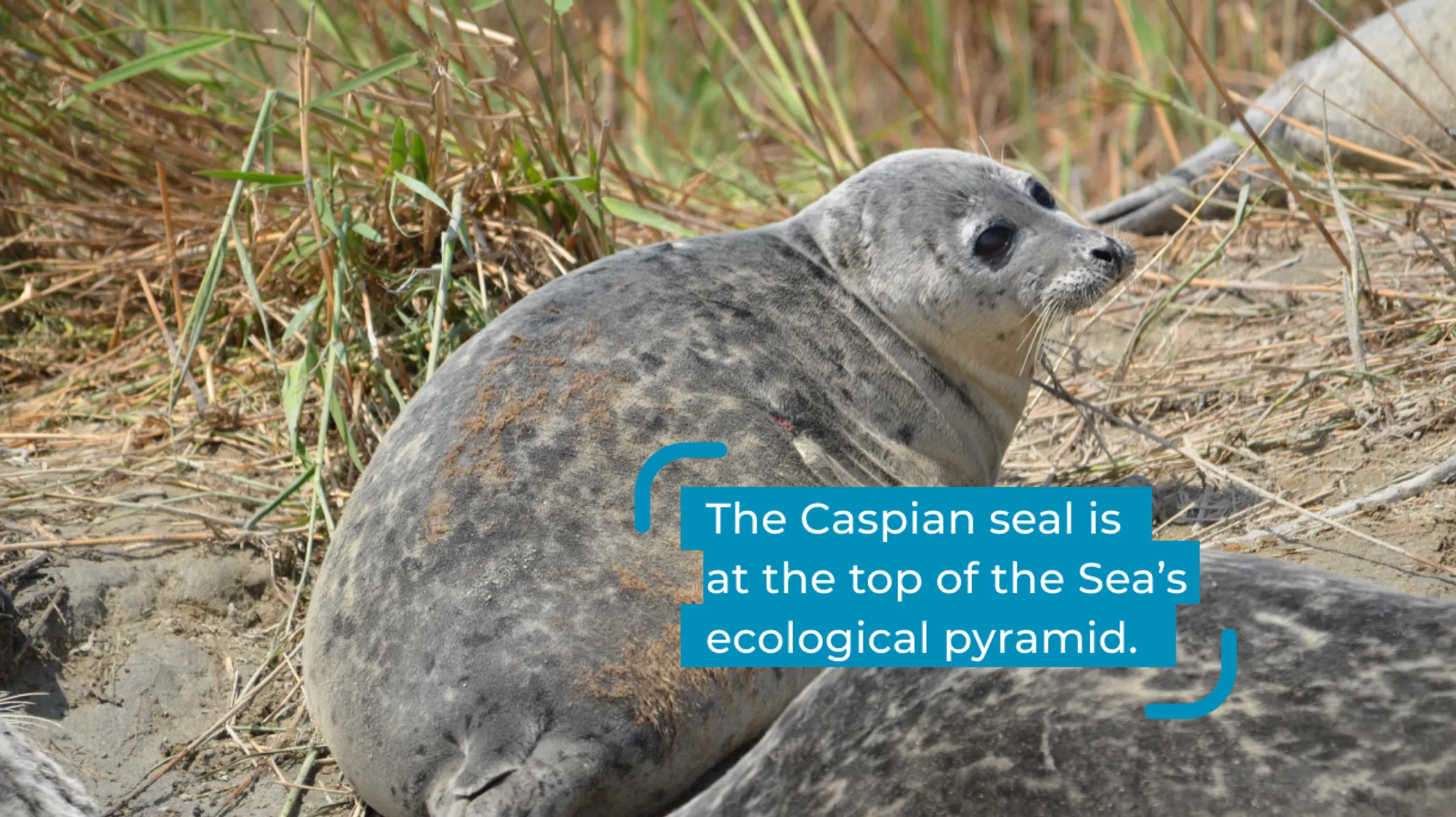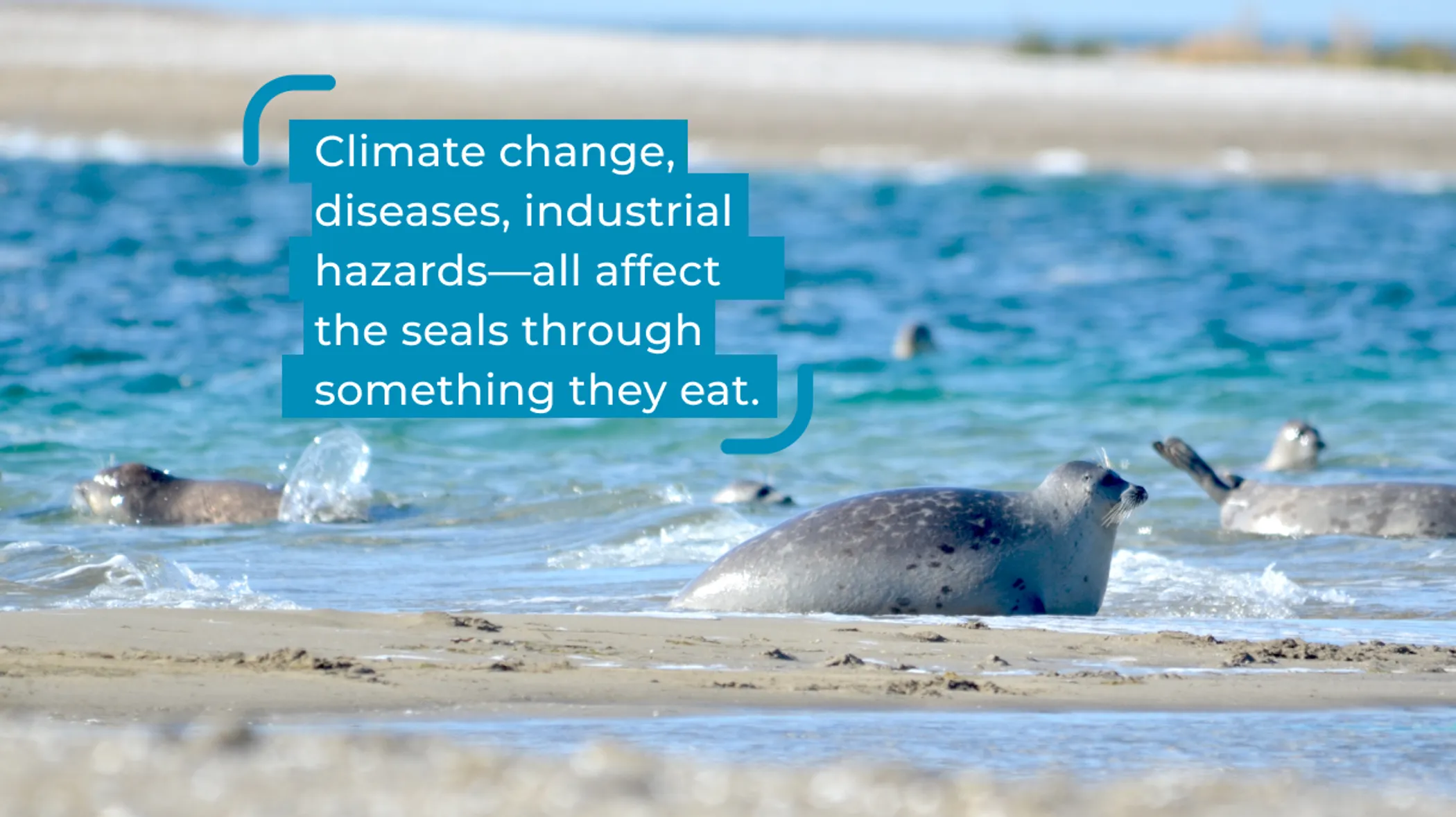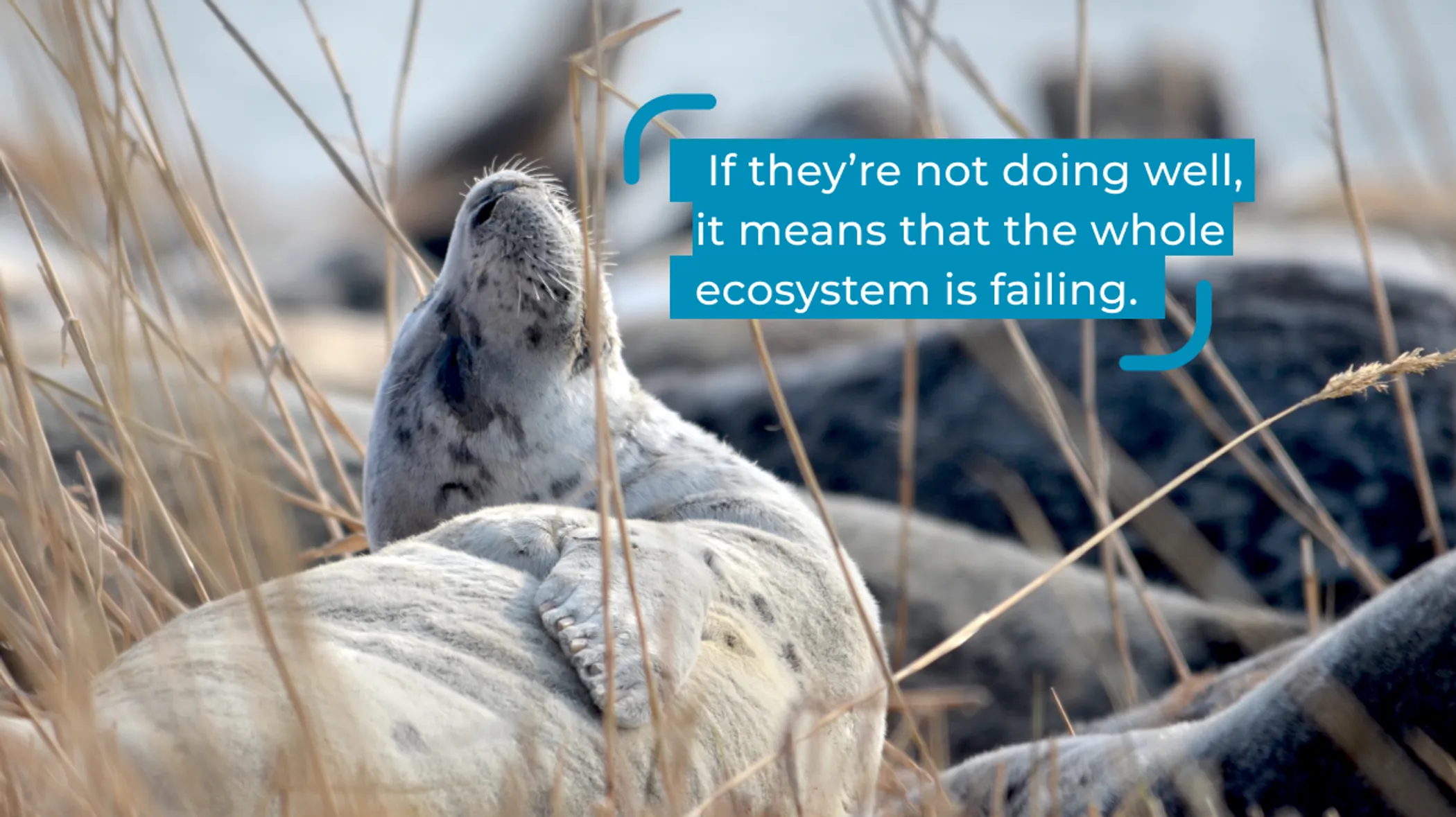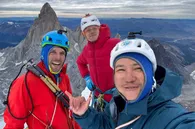A jellyfish floats wavy in the blue Caspian water. Nearby, flocks of fish swim big and small. Above the water, seals waddle in their rookeries. A passing science boat stops. A woman at the bow adjusts her binoculars, observing the scene – there’s a trashbag floating among the waste debris, and seals are few and far between. With the receding water, their islands have all but disappeared. “Let's start with the fact that seal haulouts, these islands, are constantly changing, and the seals can't be certain they'll return there next year,” the woman explains the scene. “This is what happened with Durneva Island. This was the place where, from 2009 to 2011, up to thirty thousand nesting animals were observed in springtime”. Today, “It no longer exists. Its shoreline has shallowed, the water is gone, and it is now a desert.”
This scene. We weren’t really at the shores of the Caspian Sea, of course; rather, QazMonitor contacted the woman who was — Assel Baimukanova.
“The seals have moved westward now and are laying on newly forming shoals and islets,” continues Assel, pointing out that this behavior means that the Durneva population has changed its permanent habitat. “We do not yet know how it affects the seals. Generally, it is believed that since there are stages of regression and transgression of the Sea, the seals are well adapted to these conditions. But we don’t know that for sure,” adds Assel, reflecting on her and her colleagues' ongoing struggle, as the Caspian seal, the species found only in one place on the planet, is under-researched.
Going on Wikipedia would get the homework done for any concerned reader, but do note: most of the citations there refer to papers from almost a decade ago. This situation is mirrored in the Red List of Threatened Species. It categorizes the Caspian seal as Endangered, giving a clear warning — the Caspian seal is very likely to go extinct in the next decades. This assessment was issued nine years ago, in 2015, and a lot has changed since then.
It’s a rare occurrence for the local wildlife to get an elaborate narrative courtesy of National Geographic. One that would map out what the viewer needs to know about any given biome and the animals that inhabit it. Those misty morning panoramas, the close-ups of sleepy yet already alert animals, and, of course, the narration and music choices that accentuate every movement on the screen. Something like this is rare, but not unheard of, as evidenced in Assel’s camerawork for the Institute’s documentaries, capturing yawning seals, seals scrunching their noses, and stretching. The path there, though, was winding.
Assel once saw herself as a translator. “But when I applied for Language Studies, I wasn't into it. I didn't see any future for me there, and when I graduated, I wasted so much time just being confused and thinking about what career I should pursue.” Somewhere down the road, Assel’s father, a veteran of marine life studies, offered her to work with him. “He needed someone who would edit [the Institute’s] pop science docs,” explains Assel, marking that point as her ground zero. A camerawoman at first, and not long after, a marine biologist.
Her first encounter with the Caspian seals was during an international study in 2014. Assel worked as an observer on an icebreaker and, as the ship made its way, breaking the ice sheets apart, she documented seal colonies along its path. Four years later, bagging exhausting field trips, she made up her mind—she was going to study the behavior of the Caspian seals. And, “Over the years, I’ve been able to build an ethogram, a list of behavioral acts grouped into categories,” shares Assel, adding that with this in play, there’s now a reference for sixty distinct behaviors to determine the well-being of the Caspian seal: what their comfort behaviors are, how they communicate if something is wrong, and what kind of group relationships they have.
I single out this observation — Caspian seals are peaceful toward each other. They don't exhibit strong aggressive behavior. Yes, they may display warning signs or have some aggressive outbursts, but they are not as pronounced as in other seals.
Since 2020, every spring and fall, Assel and her colleagues have been conducting their groundwork in the northeastern part of the Caspian Sea, where the Institute identified the main haulout sites. Here, both researchers and seals alike nest on newly forming islands, with the seal population recorded as high as sixty thousand individuals during the post-ice period of March, decreasing to about thirty-five thousand by mid-April. These numbers are important; the rookeries in other Caspian states—Azerbaijan, Russia, and Turkmenistan—bear bad news. Only one site in Russia remains; the rest are almost desolate.
Back when Assel started as a camerawoman, her father suggested the idea to make their own documentaries, believing that "Science should present its results to people in a more exciting and understandable form," says Assel. For her, this idea has split into two – Assel having to her credit every snout shown in every doc, and Assel going into the nitty-gritty of field research on her Instagram.
The blog helps a lot. I've noticed that many students develop an interest only because of it. Because they have an example, and they see how fascinating this field is and that you can be a successful biologist. Right now, I have three students coming in, and their eyes light up with enthusiasm.
As Assel herself puts it, this is the way. “You have to be very much in love with biology and this line of work,” she says, as aspiring scientists have to go through the initiation of the first field trip, and after that, Assel adds, “We will know for sure whether a person can be part of our team.” The entire Sea Of Fishing Nets & Garbage (SONG) series illustrates this point by juxtaposing light blue Caspian shores, beige beaches, and cute seal waddles against this contrast.
Plastic and glass bottles, bags, and many other items referred to as garbage were encountered at every step along the [Mangystau] Bay's coastline, confirming that humans are frequent visitors here. Over a distance of approximately one hundred kilometers, about five tons of marine debris were collected. Out of the five tons, three were abandoned fishing nets.
This is the throughline: enthusiasm weighed against workload. These are the cold lyrics of the SONG, where “Animals do not live to reach the old age range, which lasts from thirty-two to fifty years. [Since] more than half of all the deceased seals consist of pups and young individuals under the age of three," pitted against Assel’s silver lining. "I think we, as a society, are changing for the better. Wildlife preservation and the appreciation of it are making their way onto society’s agenda. This was not the case before. Over the last nine years that I have been actively involved in this topic, there is now more awareness”.
She and her colleagues try to convert this publicity into real action. “Our first recommendation is always to preserve the seals’ habitats and to restore those that they no longer use,” says Assel, adding that a good example of the latter would be the islands in Kendirli Bay. Located in what’s called the Middle Caspian, here, in 2016, “Seals used to beach up to more than four hundred individuals,” but skip four years ahead, and all the seals left the Bay because of boating, poaching, and waterfowl hunting. Now, the sea has receded and these islands are nearly vanished, much like the diminished human presence.
To break this loop — people driving away the animals only to face the same fate — the Institute proposed to establish a public nature reserve. Split into two, a conservation area and a buffer zone, the reserve proper would be the center of the wildlife restoration, while its frontier would accommodate traditional fisheries, making it possible to transition to a more sustainable economy. As Assel shared, the idea here is to ‘involve locals in tourism’, paving the way for more diverse, better jobs all across the Caspian shores, “So that the natural resource that we have; we wouldn't just extract it, destroy, or simply waste it, but render it as a business."
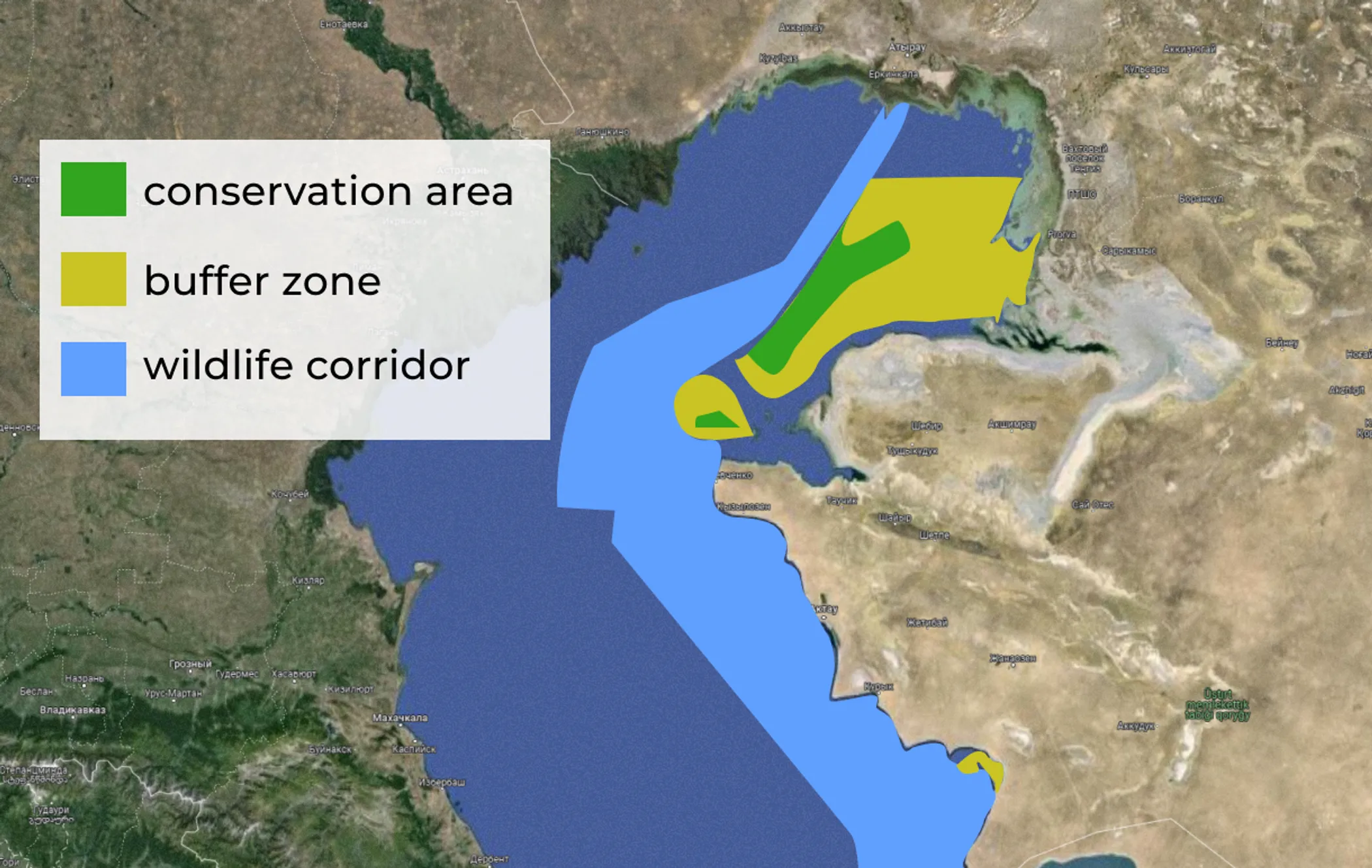
Please refer to the following institute document for an assessment and detailed map. The document is available in Kazakh and Russian.
There’s much to do. As of now, the Institute’s proposal hasn’t received an adequate implementation, as the ambition behind this plan has shrunk, and, “Its territory has been reduced, and the areas we justified are no longer included,” explains Assel. Still, she deems the idea achievable, “With funds allocated, the documents in place, and interest not only from the Ministry of Ecology, scientists, or, fish inspectors, but also from sponsors and businesses, then we’ll have different stakeholders,” creating a mutually beneficial system.
A journey to the Caspian shores, with waves gently lapping on clear beaches and adorable seals frolicking about, all while scientists work behind the scenes. This could be the future, but…
It's a big question of how we can do more in a reasonably short time because we don't have a lot of time. We don't know exactly how much time we have, but we realize that we need to react faster than we are now.
…there’s much to do.
